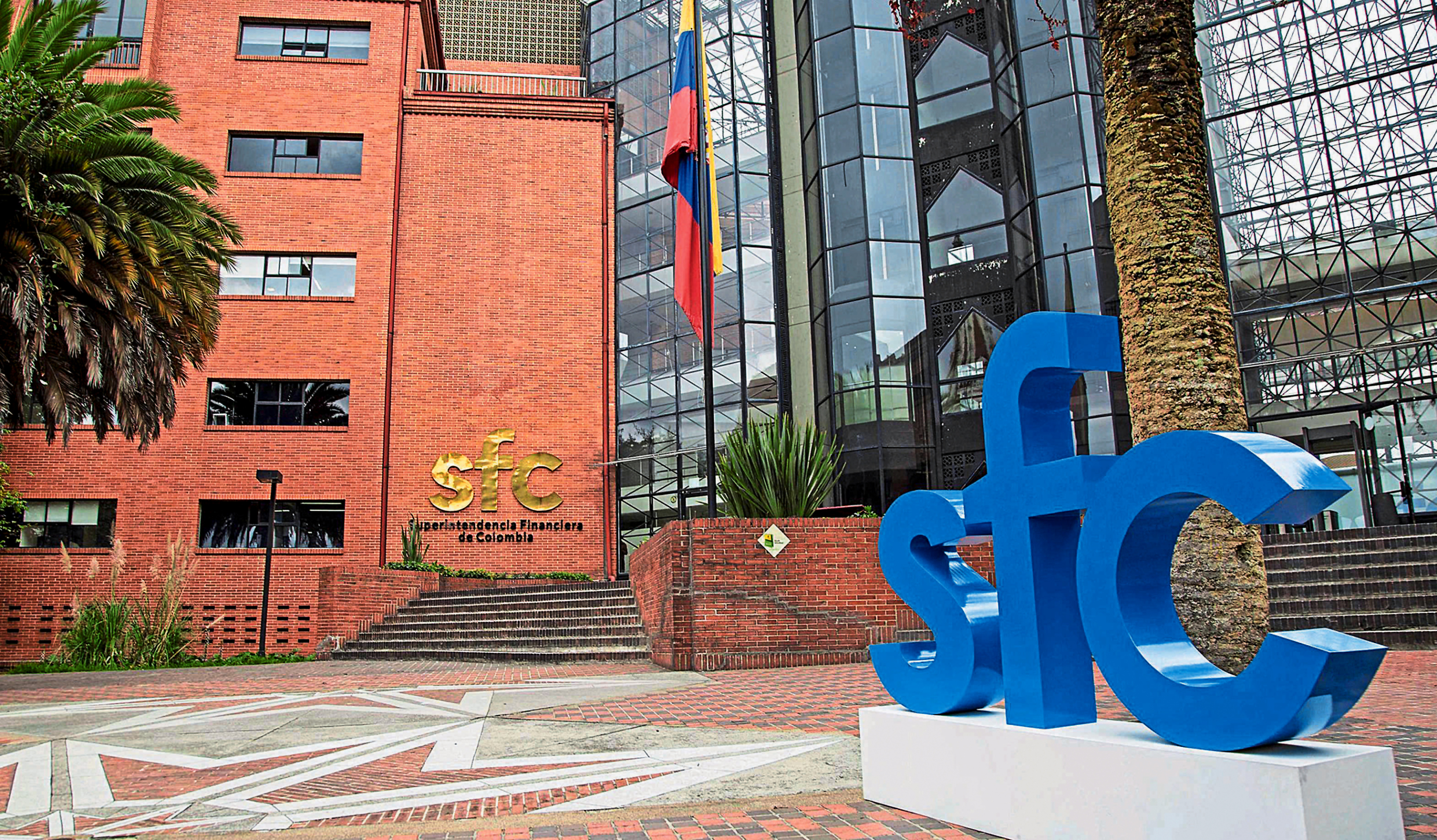5 projects seeking a more inclusive financial system: interview with César Ferrari, superfinancier

"There is no economic development without financial development, and this means having much deeper and more inclusive markets." This is a phrase from Professor César Ferrari, the current Financial Superintendent, and he has been repeating it for two years, since he took office and set out to create the necessary conditions to achieve these two objectives.
It hasn't been an easy task, says the official, while acknowledging that much remains to be done. However, he is pleased that 24 months later, progress is palpable and that users of the financial sector are beginning to benefit from the transformation underway, which is embodied in five strategic projects: open finance, digital supervision, optimal risk management, regulatory optimization, and modernization of the Superintendency of Finance.
To discuss the progress on each of these fronts, what still needs to be done, and what's next for millions of users with the modernization of the Colombian financial system, EL TIEMPO reached out to Professor Ferrari, who is leading the process, and this is what he told us:
One of your goals when you arrived at the Superintendency of Finance in 2023 was to make the financial system more profound. How much progress have you made in this regard? Colombian financial markets are shallow, not very inclusive, and very uneven. While 98 percent of people have some type of deposit account, only 35.5 percent have any credit. The former have developed more than the latter, among other reasons due to the push for subsidy policies. This led me to think about the need for a stable, yet at the same time more comprehensive system that reaches more people. To achieve this, we needed to focus on open finance.
Why open finance? Because its philosophy is for all banks to share customer information with each other, allowing customers to have information about all banks, so that each can accept or provide service to the most interested party, and this is measured by rates. Let me explain: if I have a loan from one institution at 21 percent, but another offers me the same loan at 18 percent, obviously I'll go with the highest bidder. But my bank won't want to let me go, so it will seek to offer me a lower rate. That's called competition, and when the attributes of competition begin to be met, the system is strengthened and grows. That's what open finance is for.
Now, competition has three attributes: transparent pricing, free entry and exit of customers, and asymmetric information. What solves the problem of open finance is symmetric information, allowing all banks to have information on all their customers so they can "fight" them, and that's what we achieve with open finance.

The Superintendency of Finance is undertaking a restructuring to improve its oversight and sanctioning duties. Photo: EL TIEMPO Archive
It's easy to say and understand, but complicated to implement because it means making it mandatory, even though it's been voluntary since 2022. Banks began sharing information with their subsidiaries, which proved insufficient, so it had to be made mandatory. This involved issuing a decree that is currently in the second round of market comment. This is the first draft, which aims to develop the credit market and achieve greater financial inclusion, so I hope it comes out soon.
You also mention digital supervision... There's a reason for this, and that's because banks are increasingly becoming more digital. A few days ago, we were at Nubank, which doesn't have offices open to the public, only management and administrators. So, if banking is becoming increasingly digital, we need a more digital superintendency, and that means sharing information in real time, digitized, which has enormous advantages, such as fewer staff processing data that costs a lot of money and can be invested in developing other systems.
Now, with real-time information, we can forecast balance sheets and determine whether a given entity will incur losses in the future. This will allow us to tell its managers to correct what they're doing wrong to avoid a potential crisis. That's why we need increasingly digital oversight, and less analog oversight.

The Superintendency of Finance expanded the system's risk matrix to boost credit placement. Photo: iStock
We've made progress in migrating much of the information, but that's not as important because it refers to previous data. We have a plan to do it by modules; we're starting with the loans and insurance modules because we have certain deadlines to meet. We've already completed much of the development of the modules, but we still have more work to do. This is perhaps the most important, complex, and least experienced project of all, so it will undoubtedly take the longest, as it will have to be implemented across the entire financial system. It's also the least advanced, despite the enormous work done so far.
Will it also be the most impactful of the five projects? All of them have their degree of importance; this is the most complex and the one that requires the most effort. We are making progress and learning along the way, and optimal risk management is fundamental. This means that in the credit allocation process, we must consider not only traditional risks but also emerging ones, such as those derived from climate change, which impact, for example, farmers, their crops, and their income. Therefore, the risk matrix had to be expanded to incorporate emerging risks, which also include social and corporate governance issues. We already have some important results, such as the Simplified Risk Indicator (SRI), which, with a single number, allows us to see whether an entity is in good, bad, or regular condition, because it combines all of these risks. We are still in a testing period, but when we are confident that the new practices are what they are, we will abandon the old methodology and adopt the new one.
Is the revision of the Basic Circular, a process that ended a few days ago, part of these projects? Of course, and this stems from a comment someone made to me when I arrived at the institution, to the effect that "we have so many regulations that we're stifling the development of the financial system." So we undertook the task of revising not only the Basic Legal Circular but also the Accounting and Financial Circular, a process that eliminated many now-obsolete topics, and it took us two years. The texts had to be simplified because it seemed as if they were written so that almost no one would understand them. So, that revision is now ready, and I'm about to sign it soon.
How much was removed from that circular? A lot, a lot of reports and information that are now obsolete. We've eliminated about eight chapters that are no longer necessary and that will make life easier for financial system agents and, therefore, for financial consumers. We're on the verge of the release of the new Superintendency of Finance's organization, which requires several approvals from the Ministry of Finance, the Civil Service, Dapre (Administrative Department of the Presidency), and the President's signature of the final decree, but I hope it will be ready by August 1st.

Customer Service at Banco Mundo Mujer Photo: Banco Mundo Mujer
That's right, but as the entities continue their transformation, new things emerge, new ideas will have to be incorporated; this is something that never ends. The only constant is change, and we've been working on that for the past two years, with the particularity of open dialogue. It can't be imposed because, in the end, it would mean establishing a single guiding principle. When you engage in dialogue, you reach an agreement and a consensus. I prefer to build consensus.
Does all this change also point to more preventive supervision? That's the idea, a type of oversight that always thinks ahead. That's why we need to be more digital, use artificial intelligence, be more forward-looking, and build advanced econometric models that, with the information available, allow us to tell those under surveillance whether there's a risk here or an advantage here, even before they themselves find it. This is interesting because it allows us to further develop the financial system and, therefore, helps us drive better economic development.
Credit for the popular economy is lagging, not because resources are not being channeled into the sector, but because the methodology used to measure it is inadequate.
We haven't included new topics because that would have required more effort, but we will have to do so at some point. I insist, this isn't done overnight; it's taken us almost two years just to refine the regulations. Imagine what it will take to modernize the regulations to introduce all these new elements in society, which permeate institutions and change organizations. That will come later, when I'm no longer with the entity.
'Credit pact has worked' Superintendent César Ferrari also referred to the "Credit Pact" signed with banks. He said that "it is working well," although he acknowledged that credit for the popular economy is lagging, not because resources are not being channeled into the sector but because the methodology used to measure it is inadequate.
Of the 252.7 billion pesos to be disbursed by February 2026, 45.7 percent (116 billion pesos) has been disbursed through 15.1 million transactions at an average interest rate of 15.5 percent. According to the official, most loans for the popular economy, which may be for the purchase of a motorcycle and home delivery services or a television to improve a small business, are counted as consumer or commercial loans. "We are looking at how to adjust that measurement, but we see that credit has grown more than would have been expected if there weren't that commitment to the banks," Ferrari said.
eltiempo




